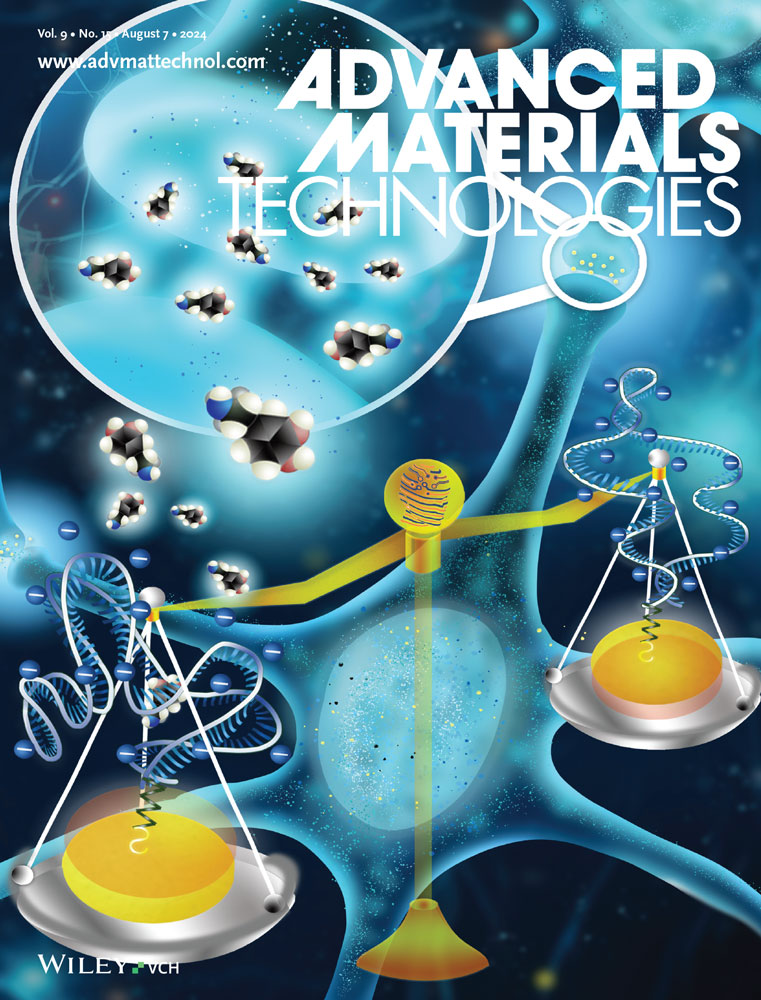聚合物复合材料作为无电池RFID温度指示器的热防熔丝。抛光工艺。9/2025)
IF 6.4
3区 材料科学
Q1 MATERIALS SCIENCE, MULTIDISCIPLINARY
引用次数: 0
摘要
在编号为2401499的文章中,Pichaya Pattanasattayavong和他的同事们展示了一种乙炔黑的复合材料,它在一种具有两种不同分子量的粘合剂中充当热防熔丝,当加热到临界点以上时,电导率会发生不可逆的变化。与RFID标签的集成实现了无电池,1位非易失性存储器的数字指示器。本文章由计算机程序翻译,如有差异,请以英文原文为准。

A Polymer Composite as a Thermal Antifuse for Battery-free RFID Temperature Indicators (Adv. Mater. Technol. 9/2025)
Thermal Antifuse
In article number 2401499, Pichaya Pattanasattayavong and co-workers present a composite of acetylene black in a binder having two different molecular weights that acts as a thermal antifuse, showing an irreversible change in conductivity when heated above a critical point. Integration with an RFID tag realizes a battery-free, digital indicator with a 1-bit non-volatile memory.
求助全文
通过发布文献求助,成功后即可免费获取论文全文。
去求助
来源期刊

Advanced Materials Technologies
Materials Science-General Materials Science
CiteScore
10.20
自引率
4.40%
发文量
566
期刊介绍:
Advanced Materials Technologies Advanced Materials Technologies is the new home for all technology-related materials applications research, with particular focus on advanced device design, fabrication and integration, as well as new technologies based on novel materials. It bridges the gap between fundamental laboratory research and industry.
 求助内容:
求助内容: 应助结果提醒方式:
应助结果提醒方式:


